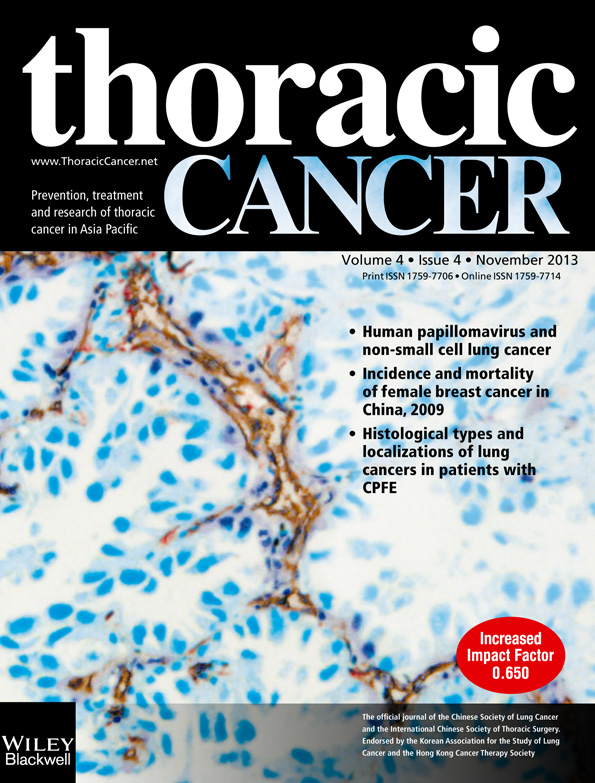Clinical model to estimate the pretest probability of malignancy in patients with pulmonary focal Ground-glass Opacity
Abstract
Background
Effective strategies for managing patients with pulmonary focal Ground-glass Opacity (fGGO) depend on the pretest probability of malignancy. Estimating a clinical probability of malignancy in patients with fGGOs can facilitate the selection and interpretation of subsequent diagnostic tests.
Methods
Data from patients with pulmonary fGGO lesions, who were diagnosed at Sun Yat-sen University Cancer Center, was retrospectively collected. Multiple logistic regression analysis was used to identify independent clinical predictors for malignancy and to develop a clinical predictive model to estimate the pretest probability of malignancy in patients with fGGOs.
Results
One hundred and sixty-five pulmonary fGGO nodules were detected in 128 patients. Independent predictors for malignant fGGOs included a history of other cancers (odds ratio [OR], 0.264; 95% confidence interval [CI], 0.072 to 0.970), pleural indentation (OR, 8.766; 95% CI, 3.033-25.390), vessel-convergence sign (OR, 23.626; 95% CI, 6.200 to 90.027) and air bronchogram (OR, 7.41; 95% CI, 2.037 to 26.961). Model accuracy was satisfactory (area under the curve of the receiver operating characteristic, 0.934; 95% CI, 0.894 to 0.975), and there was excellent agreement between the predicted probability and the observed frequency of malignant fGGOs.
Conclusions
We have developed a predictive model, which could be used to generate pretest probabilities of malignant fGGOs, and the equation could be incorporated into a formal decision analysis.




